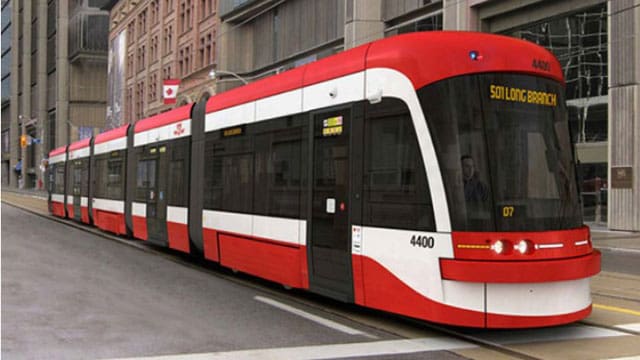Transit agencies prioritize costly rail projects over more economical and efficient alternatives like buses
 Canada’s first subway line, which opened in Toronto in 1954, was 7.4 kilometres long and cost $6.8 million per kilometre – $76 million per kilometre in today’s money. That seems a bargain compared to a subway line Toronto is now constructing at a projected cost of well over $1 billion per kilometre.
Canada’s first subway line, which opened in Toronto in 1954, was 7.4 kilometres long and cost $6.8 million per kilometre – $76 million per kilometre in today’s money. That seems a bargain compared to a subway line Toronto is now constructing at a projected cost of well over $1 billion per kilometre.
Edmonton opened Canada’s first light-rail line in 1978 at a cost of about $40 million per kilometre in today’s money. Today, Calgary, Hamilton, Kitchener, and Toronto are all planning or building light-rail lines that are expected to cost well over $250 million per kilometre. Similarly, Vancouver’s first SkyTrain cost about $41 million per kilometre in today’s money, but the region is now planning a line expected to cost $500 million per kilometre.
These numbers have led many people to ask why transit construction costs so much. I wonder instead: is there any rail project whose cost per kilometre is so great that transit agencies would reject it?
 |
| Related Stories |
| The war against cars embedded in Canadian urban planning
|
| New report sheds light on future of mobility in Canada’s big cities
|
| A better way to fund transit expansion
|
The answer to both questions seems to be the same. Transit agencies have discovered that politicians will fund any transit project, no matter the cost, so they make no effort to restrain themselves, and costs have ballooned out of control. For politicians who are spending other people’s money, the benefit is the cost, as higher-cost projects mean more money goes to contractors who will gratefully make contributions to political campaigns.
This situation is particularly aggravating to taxpayers because we have a newer technology – that can do everything light rail or SkyTrains can do, even substituting for many subways – that costs far less than rail transit. That technology, buses, can move more people to more destinations at higher speeds for far less money than any rail line.
Bus routes can also be changed overnight if transportation patterns change and don’t require years of planning and construction. Yet many transit agencies treat buses as if they are inferior to trains.
The other problem with Canada’s major transit systems is that they are monocentric, meaning they focus on downtowns. That made sense 110 years ago when most urban jobs were in factories, and most factories were in downtowns.
Then Henry Ford developed the moving assembly line to make his Model Ts. Such assembly lines required more land than older factories, so the factories moved out of downtowns, with retailers and many offices following suit. Today, only about 10 percent of urban jobs are still located in downtowns, while urban areas have numerous other economic centres.
Canada’s transit systems continue to focus on downtowns while poorly serving other economic centres. For example, before the pandemic, 45 percent of workers in downtown Calgary took transit to work, but less than 10 percent of workers in the rest of the Calgary urban area commuted by transit. Instead of spending billions on obsolete rail lines, transit agencies need to reinvent themselves so that they serve all major economic centres as well as they now serve downtowns.
Most major economic centres are located near major freeway interchanges. Transit agencies should locate 10 or so geographically distributed transit centres – which need be no more than curbside parking reserved for buses with some modest bus shelters – near freeway exchanges that are close to economic centres.
The agencies should then operate frequent, non-stop buses from every centre to every other centre. Local bus routes should radiate away from each centre, collectively reaching every neighbourhood in the urban area. This will more than double average transit speeds and allow transit riders to get from any corner of an urban area to any other part of the area at speeds competitive with driving.
Such a polycentric system will serve a much higher percentage of the region’s workers and other travellers than the current monocentric system, yet it will cost no more to operate. It will cost less to build than a single kilometre of rail line since most of the necessary infrastructure already exists. While some may worry that buses will get caught in congestion, the solution is to fix congestion for everyone, not spend billions on a slow rail system that only serves a few people in the region.
It is time for Canadian transit systems to enter the 21st century. Polycentric bus systems may be the best way to do it.
Randal O’Toole is a transportation policy analyst and author of Building 21st Century Transit Systems for Canadian Cities, recently published by the Frontier Centre for Public Policy.
For interview requests, click here.
The opinions expressed by our columnists and contributors are theirs alone and do not inherently or expressly reflect the views of our publication.
© Troy Media
Troy Media is an editorial content provider to media outlets and its own hosted community news outlets across Canada.


